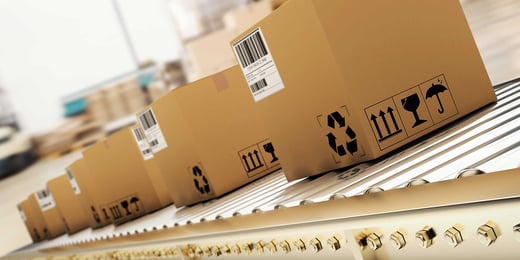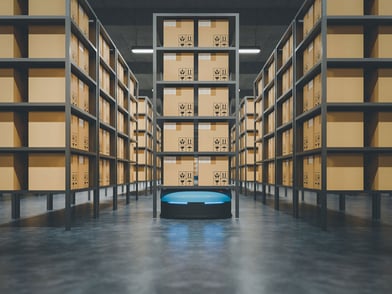In our last post, we spoke about e-commerce platforms and why your business might be ready to make the switch — and of course, where working with a 3PL partner might help you in the process.
This time, we’ll get right into the details of how using a 3PL partner can be a huge advantage if you:
- Have customers in different geographical locations
- Need flexible shipping options
- Want to be a leader in sustainable shipping
- Want less logistical risk in uncertain times (Brexit, anyone?)
Sound interesting? Let’s get started!
3PL and multi-warehousing: a match made in logistics heaven
Before we get into the nitty-gritty of multi-warehousing, let’s go over the basics first: what is multi-warehousing, and what does it involve?
Multi-warehousing is exactly what it sounds like: storing your stock in multiple places, to be able to reach customers from different areas as if you were a local competitor. The end result? Faster, cheaper shipping for your customers, and a wider market share for you.
However, the benefits of multi-warehousing are even more impressive than just speedy shipping. Let’s dig into these in a little more detail below.
1. Faster, more cost-efficient shipping
Storing your products in multiple warehouses makes it cheaper and faster to ship to a wider area. In multi-warehousing, the warehouse closest to the customer that made the purchase fulfills the order. Simple, right? Let’s take an example…
Suppose you own an online store that sells organic cosmetics, and your main customer base is located in Central and Northern Europe. You’ve got warehouses in both regions, and keep similar product lines in stock at each warehouse.
Two orders come in: one from Munich, one from 3PL Stockholm. The warehouse catering for Central Europe fulfills the order from Munich, and the one taking care of the Nordic region delivers the order to Stockholm. Both customers are cleansing, scrubbing and buffing away by the next day. Happy days.
In this model, the distance between warehouse and customer is always short. This means fulfillment time is much shorter — giving you the opportunity to beat your competitors in delivery time and price.
2. Carbon Footprint
These days, it’s becoming more and more common for people to abstain from international travel (we’re talking pre-covid here) because of the emissions caused by air travel. This shift has split over into e-commerce too — with some customers making their purchase decisions based on how close the country of origin of their items are.
For those customers (and for you as a responsible citizen of Earth), multi-warehousing makes it possible to lower the carbon footprint of shipping. We estimate, that by multi-warehousing you are able to reduce the CO2 emissions by 62% in average. This is again due to the shorter distance between point A and point B. In addition, if you can optimize the stock level in each warehouse, it may be possible to choose the slower and more sustainable option for transportation when you’re refilling your inventory and delivering your goods from the manufacturer to your warehouse locations.
3. More possibilities to scale up
Being tied down to one location only can become a burden when your business reaches a certain level of growth. If your inventory is spread across more locations, it’s easier to serve a global customer base — particularly knowing that e-commerce customers would rather abandon their cart and find a better deal than wait or pay a high price for shipping.
4. Security in an uncertain environment
If there’s one phrase that’s been used more than any other in 2020, it’s ‘uncertain times’. Luckily, multi-warehousing can bring an additional layer of risk management to your online store during tumultuous times.
We mentioned Brexit earlier, so let’s take that as an example. Storing the goods in the same customs area (and therefore taxation area) the customer is located may be a smart move, if there are concerns on how this kind of major change will affect day to day business.
You could even consider multi-warehousing to be an insurance policy of sorts. It might sound unlikely, but think about it — say you run your products out of a single warehouse. Then, that warehouse is struck by lightning, a winter storm, flood, wildfire, earthquake. More likely, though, are the problems that occur inside the warehouse, such as fire, water damage, personnel shortage, seasonal peaks, and holidays.
However, when you manage your inventory with multiple warehouses, you’ll always have a backup inventory somewhere else. Better to be safe than sorry, right?
How does multi-warehousing work in practice?
You’ve probably guessed it by now, but we’re big fans of multi-warehousing.
The thing is though, there’s a catch…
Multi-warehousing is life-changing for your business, but only when you have one centralized and easy way to connect multiple warehouses to your online store. This is where OGOship’s myOGO can help.
Every online store is different — so our e-commerce experts are happy to lay out detailed scenarios and recommend the best warehouse locations for your needs.
Ready to learn more about what working with a 3PL partner could do for your business?
Chat with us here.


Comments